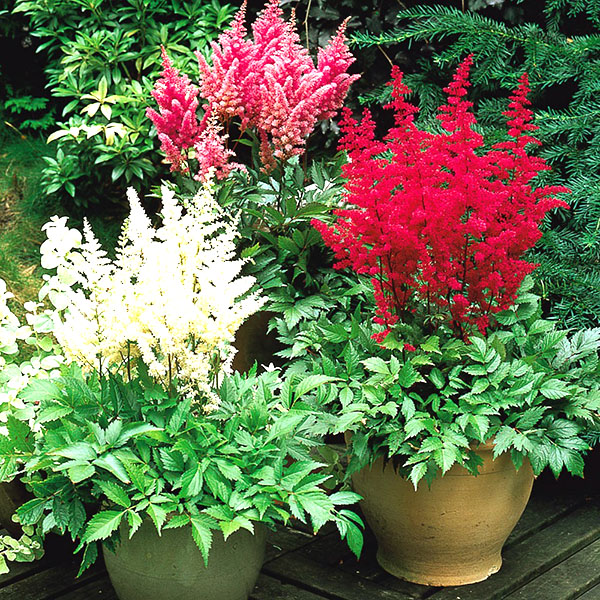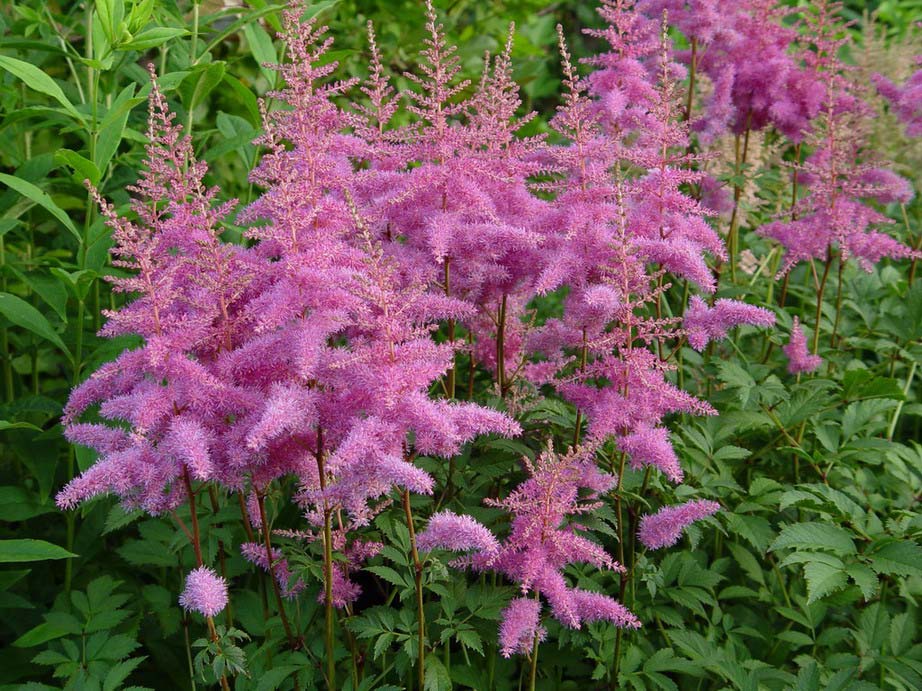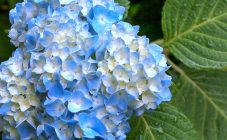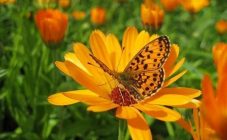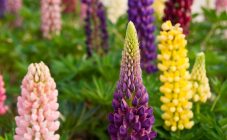Content:
Astilba belongs to the Kamnelomkov family. People call it a false spirea. The name translated from Scottish means "without shine". Indeed, the leaves of this plant have a slightly rough surface, and there is no glossy sheen on them. Astilba is often found in Asia, North America, Canada. This is a very unpretentious plant, the root system of which is able to survive frosts at 40 ° C.
The plant can grow up to 2 m in height. The seed capsule can contain up to 25,000 seeds. Astilba flowers are not large, some varieties have different colors. Bloom in the first two summer months. In August, the plant drops its color. This plant loves partial shade, although some varieties tolerate the open sun well.
Outdoor astilba care
Depending on which variety will be planted in the country, a place is selected for it. Those varieties of astilba that bloom in July need partial shade, other varieties feel great in direct sunlight. Astilbe is unpretentious to the soil composition. However, if the gardener wants the plant to please with its long flowering, then it should be planted in a place where groundwater flows close to the surface. Agriculture does not tolerate dry weather well. We must not forget about mulching. Any material is suitable for mulch, for example, small pebbles, expanded clay, sawdust, dry grass, etc. This procedure will be able to protect the plant's root system from overheating, and will also delay the evaporation of moisture. In winter, mulch will help keep warm and protect the roots from hypothermia. When to plant astilba? You can both plant astilba in the summer and plant it in late spring or early autumn.
Agriculture responds very well to fertilizing in the form of phosphorus fertilizers. You can also feed the plant with complex fertilizers and bone meal. It is recommended to apply these fertilizers to moist soil; it is better to apply peat or compote fertilization to dry soil.
Astilba does not require special care. The main condition is water. The more it is watered, the more exuberant the color will be. In dry weather, even not long, the plant dries up.
Despite its excellent frost resistance, false spirea reacts strongly to sudden changes in temperature in the spring. Therefore, in the fall, the plant must be covered, it opens up when the air temperature stabilizes. The average life span of a bush in one place is 5 years. After this time, the plant needs a transplant. The decorativeness of a plant is determined by the density of flowers on panicles.
What to plant astilba with
Astilba takes root with any plants, but the best option for itself would be those plants that can create partial shade. When using false spirea in landscape design, it combines it with smaller crops, such as: lilies of the valley, low-growing tulips, Horny Goat weed, Kupena, etc. It can be planted on rocky hills, along lawns, on the banks of water bodies. Spectacular flowering will decorate the farthest corner of the personal or suburban area.
Astilba looks great next to coniferous bushes or trees.On a green background, it will stand out as a bright spot. The inter-varietal planting and leaving of the astilba will be different.
What is Astilba combined with? It can germinate in the vicinity of such crops:
- Host;
- Fern;
- Iris;
- Tiarella;
- Geicher;
- Hellebore;
- Badan;
- Day-lily;
- Bell;
- Cuff;
- Podophyllum.
In landscape design, false spirea is often used to decorate alpine slides. If the alpine slide is in spring bloom, then astilbe can be planted next to tulips, lilies of the valley, rhododendrons, iberis, bathing suits, etc. It is recommended to plant flowers in rows.
Planting a false spirea
Astilba planting and care in the open field implies the need to adhere to certain factors. The first factor is where the flower will grow. It is desirable that it be partial shade. This will provide a high density of flowers, bright colors. The shadow is fatal to the plant.
The second factor is the planting season. Astilba is planted in open ground either in mid-spring, or in the first decade of September.
The development of the plant will depend, in turn, on such factors: heat; humidity.
Depending on the type of plant, its height changes. Low-growing ones grow in height no more than 30 cm.Those are considered tall, which have dimensions from 50 cm to 2 m.
The soil is cultivated and cultivated before planting. The first thing to do is to dig up the area where you plan to grow false spirea. Next, you need to remove debris and weeds. The soil needs feeding. The best feeding option is compost or peat. Manure is also suitable. For 1 sq. m of territory will need a solution of fertilizers with water in the amount of one bucket.
Ornamental plant care
Special care for astilba in the garden is not required. But the minimum effort will have to be made. In principle, all that an astilbe needs for a lush bloom is water.
How to care for astilba? With abundant watering, it will decorate any area for a long enough time. For false spirea, a dangerous factor is drought in conjunction with direct sunlight. Watering the plant, which is located in a sunny place, should be twice a day: in the morning and in the evening. If the flower grows in partial shade, watering can be reduced to once a day. This frequency is necessary during the period of the beginning of sap flow and the release of buds.
Plant pruning occurs in stages. After the astilbe has faded, it is necessary to get rid of the wilted panicles. This is done so that the plant does not weaken, trying to revive dried flower stalks. Deeper pruning is done in the fall, closer to winter. Cut stems and leaves should be used correctly as mulch, which will keep the snow cover very well in winter. If, for some reason, it was not possible to cut the plant in the autumn, this procedure can be carried out in early spring, before flowering begins. In addition to pruning the ground part of the plant, it may need pruning and removal of part of the root system. Given the fact that the roots of astilba grow upward, the tops that look out on the surface of the earth need to be cut off.
It is possible to preserve the decorative effect of false spirea by maintaining the vitamin composition of the soil. False spirea is unpretentious to the soil composition, but with poor fertilization it runs wild. Top dressing is recommended 3-4 times a season. You can use both mineral and organic fertilizers. Mineral dressings suitable for this plant include:
- Nitrogen fertilizers;
- Potassium;
- Phosphorus.
After fertilizing and watering, the soil must be loosened so that the root system has access to air and moisture. Astilba loves loose soil, this increases the possibility of high-quality weed removal.
In addition to the fact that this agricultural culture is unpretentious to care, it tolerates frost well, it is also resistant to diseases and pests. But the gardener, on the site of which this crop grows, needs to know about the diseases that can affect astilbe. You also need to be aware of the pests that can spoil the appearance of this plant. The most common diseases and pests are:
- Drooling pennies are small insects that live in their foamy feces. If the plant has just been attacked by a pest and did not have time to multiply on the leaves, it can be removed by hand, but if there is a lot of pest, the lazy spirea can be treated with insecticides.
- Gall nematode - feeds on the root system of the flower. A symptom of the presence of a pest is the slow development of the plant and its poor flowering. To get rid of the nematode is possible only by one method - by destroying the flower along with the root system. It is not recommended to plant anything in its place.
- Strawberry nematode is a pest of the upper part of the plant. Slowly but surely it spoils the leaves and buds. It is also impossible to get rid of it with drugs or folk remedies. The plant must be destroyed.
- Rot - affects the root system of astilba. Despite the fact that the flower loves moisture very much, an excess of it can harm the root system, and it will begin to rot. A symptom of root rot is the curling of the leaves of the plant. If astilbe blooms in this place for several years, and the stem is powerful enough, it will not die, but it will not bloom either. To get rid of this problem, the plant with the root should be dug up, the affected leaves should be removed and the flower should be transplanted to a drier place.
- Spotting - manifested by black spots on the leaves of false spirea. If this disease is detected, the flower should be treated with medicinal preparations.
Planting and leaving in the suburbs, in the Urals, in Siberia
Despite the fact that astilba can withstand frosts with a mark of 40 ° C on a thermometer, until recently it grew only in the southern zone of Russia. This is due to the fact that the flower is very light-loving, and therefore develops in those regions where there are more sunny days.
But relatively recently, breeders have bred new varieties of this plant so that residents of central and northern Russia can also decorate their plots. Varieties that are suitable for the climatic conditions of the Moscow region, the Urals and Siberia:
- Astilba Arends;
- Chinese;
- Japanese;
- Common leaf, etc.
Reproduction of false spirea in the central and northern regions of Russia occurs in several ways:
- Seeds;
- By dividing the bush;
- By budding.
How to plant astilba in open ground, you can read further. When planting astilba, it is recommended to use a few tips from experienced florists. The varieties intended for the Moscow region, the Urals and Siberia are planted in mid-May. The optimal planting site for a plant will be close to a reservoir. Unpretentious perennials can grow nearby. The flower prefers medium acidity soil. If the acidity is high, astilba will not bloom so abundantly. You can lower the acidity using dolomite flour, ash or slaked soda.
Prepare the soil before planting. Preparation will not take long. First, you need to dig it up, remove debris and weeds, as well as the roots of previous plants, and apply organic fertilizer in the form of manure or compost. If the planting is planned for the end of spring, then you need to prepare the soil in the middle of autumn. During this time, organic fertilizers will have time to process and nourish the soil with all the necessary vitamins and minerals.
Next, you need to prepare planting pits, the diameter of which should be at least 40 cm, the interval between them is about 30 cm.A small layer of drainage is applied to the bottom, in the form of fine gravel, expanded clay or broken brick.
The planting material sits in a prepared hole and is covered with soil diluted with peat. The earth is compacted and the plant is fed with mineral fertilizers. Further, a layer of mulch consisting of sawdust or hay is laid in the root hole. You can use wood ash. Mulch will protect the soil from drying out and cracking, and the root system from pests. After the plant needs abundant watering.
So what does Astilba love the most? Watering and light. Astilba care and cultivation does not require a lot of energy consumption. In the first year of life, astilbe needs more careful care than in subsequent years. This happens due to the fact that the plant needs to get used to a new place and get stronger. In the first year, it is advisable not to allow the plant to bloom, then all forces will be spent on strengthening the root system. With strong roots and minimal knowledge of care, the lush flowering of this perennial is ensured.
